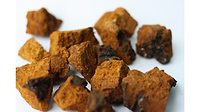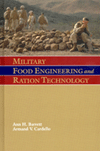

Rick Marshall recognized the need for automated loading/unloading solutions when he was vice president of business development at Flow International. Based in part on his assessment, the Kent, WA, maker of ultra-high pressure waterjet pumps and tools launched Avure Technologies, which has sold scores of HPP units throughout North America in recent years. Marshall left Flow/Avure in 2003 to launch Gridpath Solutions Inc., where he oversees the engineering of systems to move product in and out of HPP presses. His firm designed and built material-handling solutions for Avure units at Avomex, which manufactures guacamole, refrigerated entrees and other products. Last year Avomex augmented its seven Avure presses with a unit from NC Hyperbaric, Madrid, Spain. Marshall's firm also built the peripherals for that machine, and early this year Gridpath became Hyperbaric's North American sales and support representative. Food Engineering recently spoke with Marshall about the technology's development.
FE: How does extreme pressure denature pathogens, viruses and spoilage organisms?
Marshall: It doesn't crush anything, as many people think. Instead, it denatures proteins and creates an environment so harsh that a living organism can't metabolize. When the pressure returns to normal, an organism's cell wall has lost its integrity. In a high-acid environment, even a sub-lethal dose leaves the wall so compromised that the acid will destroy the cell.
FE: How long has the technology been applied to food processing?
Marshall: The first experiments using high pressure to destroy bacteria in food were done in 1897. The largest pressure vessel available at that time was 50 milliliters, and it had a very limited usable life. The economics translated to a processing cost of $2,800 per pound. Commercialization of the technology began in the early 1990s, when the Japanese applied it to fruit-based products.
In the United States, the impetus came from the US Army research center in Natick, MA. The military wanted to create better-tasting MREs for the troops, and grant money was made available to develop HPP. Pumping technology was needed to make it work, so Dan Farkus at Oregon State University subcontracted with Flow International to develop it. The first US commercial application was by Don Bowden, a Texas restaurateur who founded Avomex Inc. He purchased some vessels with 2-5 liter capacity. They kept breaking down, but he was convinced HPP was the only way to process a heat-sensitive product like guacamole.
FE: Why hasn't HPP become mainstream?
Marshall: Hormel applied HPP to prosciutto, which is a high-margin product, and shellfish processors use it because it also shucks oysters and results in cost savings. But it was painfully obvious to me in 1997 that it was never going to be mainstream if there wasn't a way to elevate it to more of a continuous process. That's been the focus of Gridpath: creating the peripheral equipment and software needed to make high pressure work in traditional food manufacturing.
FE: Flow's Avure division worked with an A/E firm to address the same issue three years ago. How does your approach differ?
Marshall: At Avure, we were concerned with selling the high-pressure machine, and the A/E was trying to sell design services costing millions of dollars. They were looking at 30,000 feet, but the problems were lower. Processors are concerned with traceability, validation of the process and making it less of a batch process. Some of the old designs relied on one electro-mechanical device to validate time and pressure. What if it fails or is inaccurate? One of the things we've developed is redundant systems.
FE: How do the systems from Avure and NC Hyperbaric differ?
Marshall: Flow builds isostatic presses, most commonly used in metal forming to fabricate parts like jet-engine blades. Their metallurgists and mechanical engineers very cleverly applied that technology to the huge new market they saw emerging in food, but they wanted to change food processors' expectations to fit the vertical presses they made. There are a couple of drawbacks: either a mezzanine has to be built or a large hole dug out, which means the press isn't going to be moved anywhere. Raw product can't be loaded until finished product is removed, and the risk of crossover exists.
NC Hyperbaric's system is horizontal, which is much better from a HACCP perspective. The company makes milling machines, but the design concept came from Andres Hernando, a maintenance engineer who worked in the food industry. He went to Jose Nicolas-Correa and said, "This is great technology, but it needs to be horizontal. If I design it, will you build it?"
FE: When did you first encounter the horizontal layout?
Marshall: Gridpath was working with Avomex's plants in Mexico, installing a validation system for all seven of their vertical presses. They signed a contract for a horizontal unit and asked me to take a close look at it. When I saw it in real life, I knew this would be the ticket. Most of the roadblocks to employing high pressure had been addressed. What remained would be addressed by Gridpath.
The installed base in Europe was in companies with much lower production levels than you see in North America. Product containment baskets were small, they were manually loaded and unloaded, there was no traceability, and there was no data acquisition system. We addressed those needs and continue to design more automation into the system. You never want the high-pressure machine waiting for the next load, for example. You can run it in a more or less continuous fashion as long as you design a buffer for storage at the infeed and discharge areas.
The other important improvement is process validation and making sure there is no possible way for unprocessed product to make it through the equipment or to bypass it. For example, a high-pressure transducer physically confirms that the required pressure and processing time occurs in each cycle. The intensifier pump uses hydraulic oil to push a 20-sq.-in. piston against a square inch of water, and the cross-check validation system verifies that this occurs. If there is 4,000 psi of pressure on the low side, there will be 80,000 psi on the high-pressure side. If the chamber loses power or the appropriate pressure is not confirmed, it is impossible to get product through.
We've also incorporated bar-code readers to scan a unique identification number for incoming product. The cycle number, date, process time and pressure and any other process parameter can then be married to that unique code for a complete HACCP record. After product exits the chamber, it is carried on a steel-mesh conveyor, where water shakes off each time the package changes position, then goes past a 60 HP blower that strips any remaining moisture so that another label can adhere to the package, if desired.
FE: What maintenance issues does HPP present?
Marshall: Most of the maintenance involves seal replacement. Fabricators of jet-engine blades cycle the equipment about four times a day. In the food industry, it's cycling six or more times an hour, so metal fatigue becomes an issue. The wire-winding technologies and high tensile-strength wire used result in very durable pressure vessels. In most food plants, they should last seven to ten years, or pennies per cycle.
FE: Are throughput rates sufficient for high-volume processors?
Marshall: Processing time is product specific, but if you look at ready-to-eat meat in a vacuum pouch, throughput of 2,000 to 2,500 lbs. an hour on a single machine is reasonable. One set of peripherals can efficiently cycle product in and out of two presses, and a tandem configuration results in 2.3 times the throughput. Each machine has four intensifier pumps. Most of the cycle time is spent getting up to pressure; once the proper pressure is reached, only two pumps are needed to sustain it, so six pumps are available to accelerate the process on the other press.



